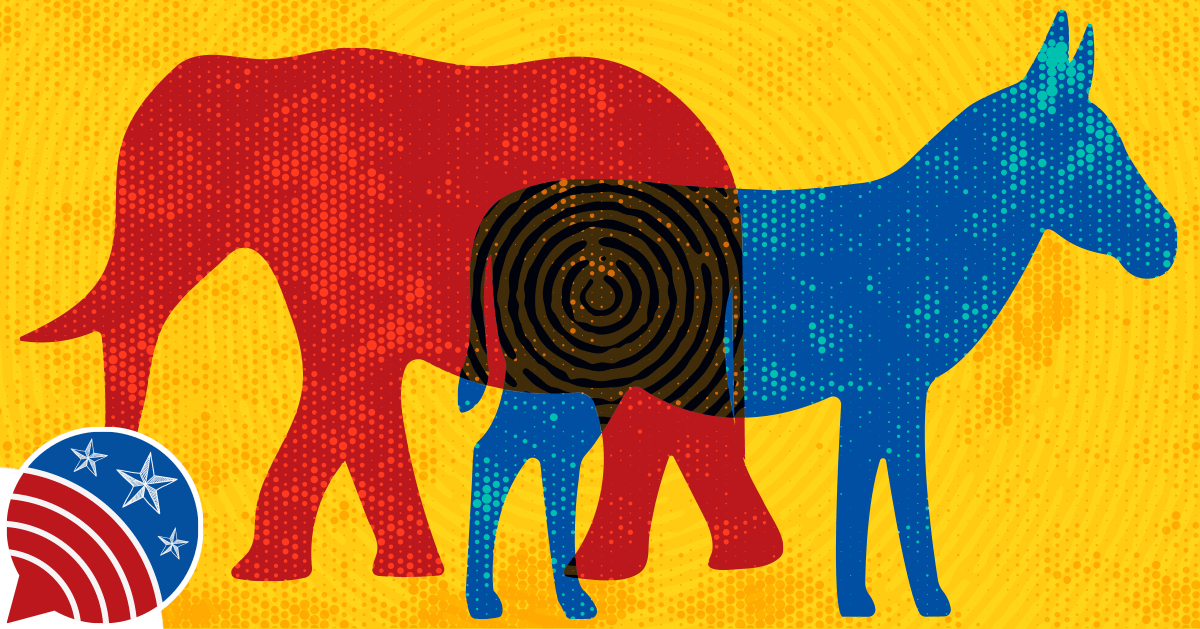
The Evolution of Political Parties
Have our political parties always been this contentious? What purposes do political parties serve? Our two party-system was present at the founding, but the evolution of political parties in America has not been linear. Explore the nuances within liberal and conservative factions. Prepare to engage in discourse about the benefit and harm political parties cause and what role the people have in them.
Podcasts & Videos
The Evolution of Political Parties: The Evolution of Political Parties in America, Part 2
Instructions
- Watch and listen to the 60-Second Civics video below. If you'd like, you can also read along using the script that appears below the quiz. Or you can turn on the video's subtitles and read while watching the video.
- Take the Daily Civics Quiz. If you get the question wrong, watch the video again or read the script and try again.
Episode Description
Dr. Donna Phillips: Welcome to 60-Second Civics, the daily podcast of the Center for Civic Education. I'm Donna Phillips. Today we continue our series on political partiesas part of the Civil Discourse: An American Legacy project. We are joined by specialguest Dr. Lester Brooks, American history professor emeritus at Anne Arundel Community College. Welcome back, Dr. Brooks.
Dr. Lester Brooks: Thank you for having me.
Dr. Donna Phillips: Sure. Dr. Brooks, what are the origins of political parties?
Dr. Lester Brooks: In the 1790s, we get the first two political parties, the Federalist Party and the Democratic Republicans. And in general, there were two issues that brought the two political parties about. One was Alexander Hamilton's programs, and it would create a stronger central government. And some people didn't like the creation of a stronger central government and opposed that. These would be the Democratic Republicans or the Jeffersonian Republicans.
The other issue was foreign affairs. War had erupted between Britain and France, and the question was who should America support? And those followers of Jefferson, Jeffersonian Republicans or Democratic Republicans, they followed the French supported the French, whereas the the Federalist Party, Hamilton and John Adams, they followed the British. They supported the British. And so here in general, we began to see the formation of the first two political parties around these issues.
Dr. Donna Phillips: Thank you, Dr. Brooks. That's all for today's podcast. 60-Second Civics, where civic education only takes a minute.
Dr. Lester Brooks: Thank you for having me.
Dr. Donna Phillips: Sure. Dr. Brooks, what are the origins of political parties?
Dr. Lester Brooks: In the 1790s, we get the first two political parties, the Federalist Party and the Democratic Republicans. And in general, there were two issues that brought the two political parties about. One was Alexander Hamilton's programs, and it would create a stronger central government. And some people didn't like the creation of a stronger central government and opposed that. These would be the Democratic Republicans or the Jeffersonian Republicans.
The other issue was foreign affairs. War had erupted between Britain and France, and the question was who should America support? And those followers of Jefferson, Jeffersonian Republicans or Democratic Republicans, they followed the French supported the French, whereas the the Federalist Party, Hamilton and John Adams, they followed the British. They supported the British. And so here in general, we began to see the formation of the first two political parties around these issues.
Dr. Donna Phillips: Thank you, Dr. Brooks. That's all for today's podcast. 60-Second Civics, where civic education only takes a minute.






